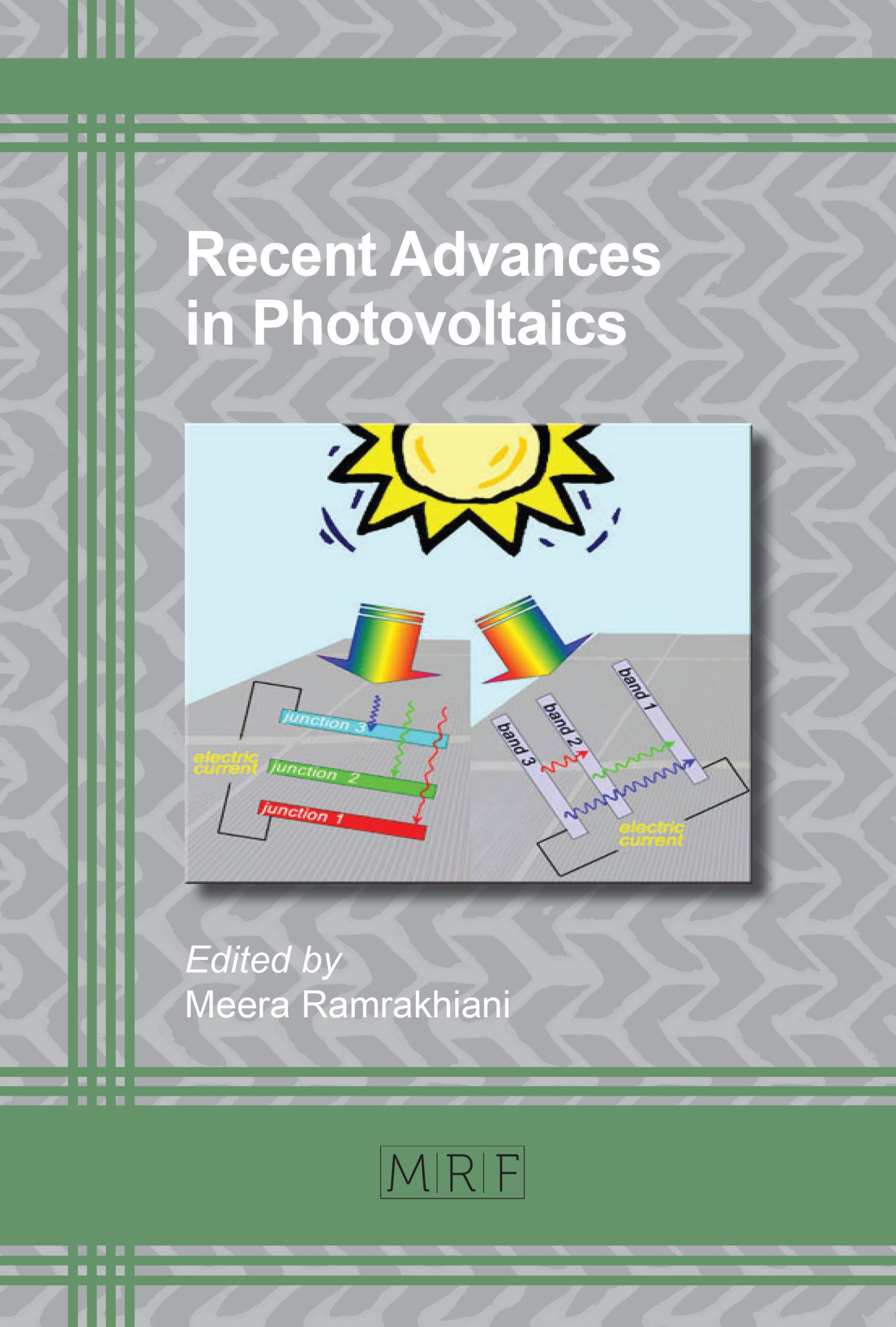Basic principles and theory of the photovoltaic effect
M. Ramrakhiani, Swati Dubey, Hemraj Waxar, Kamal Kumar Kushwaha, Pranav Singh
Among new energy sources, solar energy is extremely promising since it is practically inexhaustible. Photovoltaic (PV) is a method of converting solar energy directly into electricity using semiconducting materials. The number of solar energy power projects using photovoltaic technology is gathering momentum due to deeper understanding of the technology and commercial and government policies. Of course improved affordability due to the falling cost is another major factor. In order to improve the efficiency and reduce the cost further, a clear understanding of the basic scientific principles of photovoltaic is necessary. The basic theory and principles of the photovoltaic effect are described here giving expressions for voltage and current. Various characteristics and parameters of solar cells are described and suitable materials for solar cells are discussed.
Keywords
Photovoltaic Effect, Solar Cell Characteristics, Solar Cell Parameters, Solar Cell Materials
Published online 8/2/2017, 21 pages
DOI: http://dx.doi.org/10.21741/9781945291371-2
Part of Recent Advances in Photovoltaics
References
[1] B. P. Chandra, Recent Advances in Solar Cell Material, National Seminar on Renewable Energy Sources 2008.
[2] B. O’Regan, M. Grätzel, Nature 353, 737, 1991. https://doi.org/10.1038/353737a0
[3] D. Anderson, M. D. Archer and R. D. Hill, Clean Electricity from Photovoltaic, Eds. (London Imperial College Press), 2001.
[4] Green M A, Emery K, Hishikawa Y, Warta W. Solar Cell Efficiency Tables (version 33), Progress in Photovoltaics: Research and Applications 2009; 17: 85-94. https://doi.org/10.1002/pip.880
[5] Harray A. Sorensen, Energy Conversion Systems.
[6] J. W. Christain, P. Haasen, T. B. Massalski, Progress in Material Science, Vol. 35 pp-205-418, Pregamon Press 1991.
[7] K. Yamamoto: Sol. Energy Mater. Sol. Cells 66, 117, 2001. https://doi.org/10.1016/S0927-0248(00)00164-1
[8] M. A. Green, “Photovolatics: coming of age”, Conf. Record 21st IEEE Photovoltaic Specialists Conf., 1-7 (1990).
[9] M Bazilian, I Onyeji, M Liebreich, I MacGill, J Chase, J Shah, D Gielen (2013). “Re-considering the economics of photovoltaic power”. Renewable Energy. https://doi.org/10.1016/j.renene.2012.11.029
[10] Meera Ramrakhiani, Photovoltaic Effect and Solar Cells, Everymen’s Science; 28 (6) pp-209-215; 1994.
[11] Nelson, Jenny. The Physics of Solar Cells. Imperial College Press, 2003. https://doi.org/10.1142/p276
[12] P. Maycock, PV market update. Renewable Energy World, July-Aug., 86, 2004.
[13] Pallab Bhattacharya, Semiconductor Optoelectronic Devices; Prentice-Hall of India Pvt. Ltd. New Delhi 1999.
[14] Pulfrey, L. D. Photovoltaic Power Generation. New York: Van Nostrand Reinhold Co. ISBN 9780442266400, 1978.
[15] R. K. Kotnala and N.P. Singh, Essentials of Solar Cell; Allied Publishers Pvt. Ltd. 1986.
[16] R. Trykozko, Principles of Photovoltaic Conversion of Solar Energy, Opto-Electr. Rev., 5, No. 4, 1997.
[17] S. Chandra, R. K. Pandey; Phy. Stat. Sol. (a) 59, 787, 1980. https://doi.org/10.1002/pssa.2210590246
































